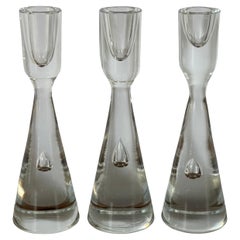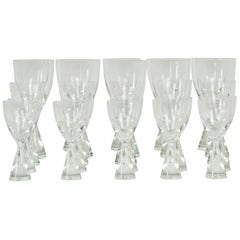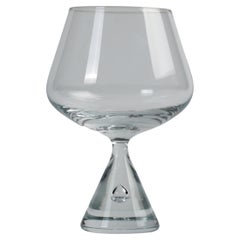Holmegaard Princess
Mid-20th Century Danish Scandinavian Modern Candlesticks
Glass
Recent Sales
Vintage 1950s Danish Mid-Century Modern Glass
Glass
Vintage 1950s Danish Mid-Century Modern Crystal Serveware
Blown Glass
Vintage 1950s Danish Scandinavian Modern Candlesticks
Glass
Mid-20th Century Danish Scandinavian Modern Glass
Glass
Mid-20th Century Danish Scandinavian Modern Glass
Glass
Mid-20th Century Danish Scandinavian Modern Glass
Glass
Mid-20th Century Danish Scandinavian Modern Barware
Blown Glass
Vintage 1960s Danish Scandinavian Modern Glass
Glass
Vintage 1960s Danish Scandinavian Modern Glass
Glass
Vintage 1960s Danish Scandinavian Modern Glass
Glass
Vintage 1960s Danish Scandinavian Modern Glass
Glass
Vintage 1960s Danish Scandinavian Modern Glass
Glass
Vintage 1960s Danish Scandinavian Modern Glass
Glass
Vintage 1960s Danish Scandinavian Modern Glass
Glass
People Also Browsed
Early 2000s Contemporary Figurative Sculptures
Bronze
Vintage 1960s Danish Scandinavian Modern Sofas
Fabric, Wood
2010s American Organic Modern Coffee and Cocktail Tables
Hardwood, Walnut
Mid-20th Century American Mid-Century Modern Sofas
Upholstery, Wood
2010s Italian Wardrobes and Armoires
Walnut
Vintage 1970s Danish Post-Modern Dining Room Chairs
Chrome
Vintage 1970s American Mid-Century Modern Lounge Chairs
Fabric, Bouclé, Walnut
2010s British Minimalist Floor Mirrors and Full-Length Mirrors
Stone, Limestone, Marble, Carrara Marble, Slate, Bronze, Steel, Metal, B...
Vintage 1950s American Mid-Century Modern Lounge Chairs
Fabric, Bouclé, Walnut
Mid-20th Century German Mid-Century Modern Candlesticks
Metal
21st Century and Contemporary Czech Scandinavian Modern Dining Room Tables
Oak, Walnut
21st Century and Contemporary Portuguese Modern Sectional Sofas
Upholstery, Velvet
2010s American Modern Benches
Steel
Vintage 1970s Italian Mid-Century Modern Sofas
Leather, Hardwood
2010s Mexican Mid-Century Modern Coffee and Cocktail Tables
Hardwood
21st Century and Contemporary Asian Modern Stools
Metal, Bronze
Holmegaard Princess For Sale on 1stDibs
How Much is a Holmegaard Princess?
Holmegaard for sale on 1stDibs
Holmegaard has been creating quality glassware for almost two centuries. The legendary glassworks has collaborated with scores of celebrated designers over its long history, including Arne Jacobsen, Louise Campbell, Bodil Kjær and many others, with each artisan crafting vases, bottles and other serveware and decorative objects that are widely loved by collectors and art connoisseurs alike. Today Holmegaard is a powerhouse of functionalist modern Danish glass design.
Holmegaard Glassworks was the dream of Danish Count Christian Danneskiold-Samsøe, who petitioned the king of Denmark for permission to build a factory. Sadly, by the time permission was granted, the count had passed away, leaving his dowager, the Countess Henriette Danneskiold-Samsøe, to carry on her late husband’s dream in 1825. The factory was established in the town of Fensmark in the Holmegaard bog, where rich peat could be harvested and used to fuel the high-temperature kilns required to produce glass there.
The factory initially produced only simple mouth-blown green glass packaging bottles — the need was for glassware that was merely functional. It wasn’t until the 1920s that it made progress as a significant entity in the world of design. There was a fruitful partnership to create dinner glassware with the Royal Danish Porcelain Factory and glass artist Oluf Jensen. This was followed in 1925 by Holmegaard’s hiring Jacob Eiler Bang as the glassworks’ first in-house designer.
Bang was trained as an architect and was working on the Danish Pavilion at the International Exhibition of Modern Decorative and Industrial Arts — the fair that brought the Art Deco style to worldwide attention — when his efforts caught the attention of Holmegaard. Bang believed in the concept of making things that were “beautiful, strong, practical and cheap.” His seductive, functionalist designs for vases, decanters, bottles and other objects — guided by the theories that underpin Scandinavian modernism — garnered acclaim for both Bang and Holmegaard, and he became known as one of the fathers of functionalism in Danish glassware.
Holmegaard went on to work with Per Lütken, who created intricate objects that redefined the factory’s style and Danish glass design as a whole. Lütken produced over 3,000 pieces for the glassworks, including the revered Provence bowl, one of the pieces for which the glassworks is best known. The brand went on to work with other notable artists including Otto Brauer and Jacob Bang’s son, Michael Bang, whose Palet range, Fontaine wine glass range, and Mandarin lamps are among Holmegaard’s most iconic creations.
Today, Holmegaard Glassworks is owned by Rosendahl Design Group. It is Denmark’s largest manufacturer of glass in addition to being the oldest and most historic.
Find vintage Holmegaard sconces, vessels, decorative bowls, tableware and other pieces on 1stDibs.
A Close Look at Scandinavian Modern Furniture
Scandinavian modernism is perhaps the warmest and most organic iteration of modernist design. The work of the designers associated with vintage Scandinavian modern furniture was founded on centuries-old beliefs in both quality craftsmanship and the ideal that beauty should enhance even the humblest accessories of daily life.
ORIGINS OF SCANDINAVIAN MODERN FURNITURE DESIGN
- Emerged in the 1930s
- Scandinavian design and Nordic design originated primarily in Denmark, Sweden, Finland, Iceland and Norway
- Introduced in the United States in mid-20th century
- Informed by the Bauhaus; influenced American mid-century modernism
CHARACTERISTICS OF SCANDINAVIAN MODERN FURNITURE DESIGN
- Bold, clean lines and simple, sturdy symmetries
- Use of natural materials — native woods such as pine, ash and beech
- Open, airy spaces
- Promotion of functionality
- Emphasis on craftsmanship; rooted in cabinetry profession and traditional construction techniques
- Minimal ornamentation (little to no embellishment)
- A neutral or light color palette owing to prominence of light woods
SCANDINAVIAN MODERN FURNITURE DESIGNERS TO KNOW
- Alvar Aalto
- Hans Wegner
- Kaare Klint
- Arne Jacobsen
- Greta Magnusson Grossman
- Finn Juhl
- Arne Vodder
- Verner Panton
ICONIC SCANDINAVIAN MODERN FURNITURE DESIGNS
VINTAGE SCANDINAVIAN MODERN FURNITURE ON 1STDIBS
The gentle, organic contours that are typical of Scandinavian design appear in the furnishings and decor created by Danish, Finnish and Swedish designers not as a stylistic gesture, but rather as a practical, ergonomic — and, as importantly, elegant — response to the human form.
Each nation produced exceptional talents in all areas of the applied arts, yet each had its forté. Sweden was home to Greta Magnusson Grossman and Bruno Mathsson — creators of the classic Grasshopper lighting series and Berlin daybed, respectively — but the country excelled most notably at ceramics. In the 1920s at the great Gustavsberg porcelain manufactory, Wilhelm Kåge introduced pieces in the Scandinavian style based on influences from folklore to Cubism; his skills were passed on to his versatile and inspired pupils Berndt Friberg and Stig Lindberg.
Likewise, Finland produced a truly ingenious Scandinavian modern furniture designer in the architect Alvar Aalto, a master at melding function and artistic form in works like the Paimio chair, created in collaboration with his first wife, Aino. Yet Finnish glassware was pre-eminent, crafted in expressive, sculptural designs by Tapio Wirkkala and Timo Sarpaneva.
The Danes excelled at chairs. Hans Wegner and Arne Jacobsen were exemplars of the country’s facility with wood, particularly teak.
Wegner created such iconic pieces as the Round chair and the Wishbone chair; Jacobsen — while the revolutionary architect and furniture innovator produced the best-selling plywood Ant chair — designed two classic upholstered pieces of the 1950s: the Swan chair and Egg chair. The list of great Danes could go on and on, including Finn Juhl, a stylistic maverick and maker of the bold Chieftain chair; Poul Kjaerholm, with his lean metal-and-rattan aesthetic; and Verner Panton, who introduced a vibrant Pop note into international design.
Today, decades after their heyday, the prolific, ever-evolving Scandinavian modernists continue to amaze and delight, and interior designers all over the world use their pieces to bring warmth to any given space.
On 1stDibs, you will note both instantly recognizable vintage Scandinavian modern chairs, sofas, rugs and tables — those that have earned iconic status over time — and many new discoveries.
Finding the Right Glass for You
Whether you’re seeking glass dinner plates, centerpieces, platters and serveware or other items to elevate the dining experience or brighten the corners of your living room, bedroom or other spaces by displaying decorative pieces, find an extraordinary range of antique, new and vintage glass on 1stDibs.
Glassmaking is more than 4,000 years old. It is believed to have originated in Northern Mesopotamia, where carved glass objects were the result of a series of experiments led by potters or metalworkers. From there, the production of glass vases, bottles and other objects proliferated in Egypt under the reign of Thutmose III. Later, new glassmaking techniques took shape during the Hellenistic era, and glassblowing was invented in contemporary Israel. Then, on the island of Murano in Venice, Italy, modern art glass as we know it came to be.
Over the years, collectors of glass decorative objects or serveware have sought out distinctive antique and vintage pieces of the mid-century modern, Art Deco and Art Nouveau eras, with artisans such as Archimede Seguso, René Lalique and Émile Gallé of particular interest for the pioneering contributions they made to the respective styles in which they worked. Today, long-standing glassworks such as Barovier&Toso carry on the Venetian glasswork tradition, while modern furniture designers and sculptors such as Christophe Côme and Jeff Zimmerman elsewhere test the limits of the radical art form that is glassmaking.
From chandeliers to Luminarc stemware, find a collection of antique, new and vintage glass on 1stDibs.


